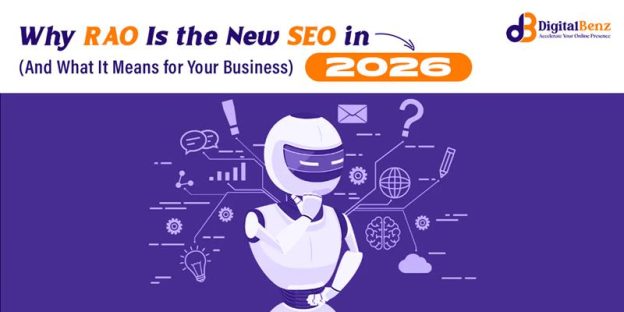Introduction
A few years ago, every business owner asked the same question:
“How do I rank on Google?”
But in 2026, that question has quietly evolved into something deeper:
“How do I appear in AI answers?”
That tiny shift in language says everything about how fast digital marketing is changing.
For years, SEO (Search Engine Optimization) was the key to online success. You optimized your site for some targeted keywords, built backlinks, and appeared to the top of search results.
But now, the way people search for information has been changed. Instead of typing short keywords, people are talking to AI-powered assistants like ChatGPT, Google Gemini, Bing Copilot, and Perplexity. They’re asking full questions — and getting complete answers instantly, often without ever clicking a link.
No one scrolls through ten pages of results anymore.
They just trust the AI’s summary.
So here’s the real question every business should be asking in 2026:
How can your brand be part of those AI-generated answers?
That’s where RAO — Retrieval-Augmented Optimization — steps in.
What Is RAO in Simple Terms?
RAO (Retrieval-Augmented Optimization) is a new approach to content optimization that ensures AI systems can find and use your content when generating answers.
To understand it simply:
- Retrieval means AI tools fetch information from trusted online sources.
- Augmented means they blend that real data into the answer they show users.
- Optimization means you make your content easy for these systems to find and use.
So, while traditional SEO helps you rank on search engines,
RAO helps you appear inside AI-generated answers — the new front page of the internet.
The Evolution: From SEO → AEO → RAO
Let’s look at how we got here.
1. SEO (Search Engine Optimization)
In the early 2000s, SEO was all about keywords, backlinks, and website ranking.
If you optimized your website for Google, you’d get traffic. It was that simple.
2. AEO (Answer Engine Optimization)
As voice search and smart assistants like Siri and Alexa became popular, SEO evolved into AEO.
Instead of just ranking, websites needed to answer — short, clear, question-based content that could appear in featured snippets or voice replies.
3. RAO (Retrieval-Augmented Optimization)
Now, with AI-driven systems, the next step is RAO.
These systems don’t just crawl — they retrieve, read, and summarize information in real time.
If your content isn’t optimized for that, it won’t appear anywhere in an AI chat answer — no matter how high you rank on Google.
Why RAO Is the New SEO
1. People Don’t “Search” anymore— They “Ask”
Let’s say someone wants to promote their bakery business.
Earlier, they might have searched: “Digital marketing for bakeries.”
Now they ask AI tools:
“How can I attract more customers to my bakery using digital marketing?”
The AI then scans the web, finds reliable content, and gives one answer.
If your content provides that answer clearly, your business name could appear right inside that AI’s response.
That’s visibility at a whole new level.
2. AI Relies on Retrieval Not Just Rankings
Most AI tools use a system called RAG (Retrieval-Augmented Generation).
This means they don’t rely only on what they’ve been trained on — they retrieve the latest, most relevant information from the web.
So if your content is structured, factual, and credible, it becomes retrievable by these AI tools.
That’s the main idea behind RAO.
3. The Focus Has Shifted From Ranking to Relevance
Traditional SEO measured success by how high you ranked.
RAO measures success by how often your content gets used or referenced by AI systems.
When users get answers from ChatGPT or Perplexity and your brand appears as a cited or mentioned source, that builds trust and authority — even if they never visit your website directly.
How to Make Your Content RAO-Friendly
RAO doesn’t replace SEO — it builds on top of it.
Here are six simple but powerful ways to prepare your content for the AI era:
1. Answer Questions Directly
Write like you’re responding to a real person’s question.
For example:
Question: How can small businesses use social media effectively?
Answer: Small businesses can grow faster on social media by focusing on short videos, storytelling, and local hashtags instead of generic posts.
This clear Q&A structure helps both humans and AI understand your content.
2. Keep Your Language Simple and Structured
AI tools process content that’s clean and easy to scan.
Use:
- Short sentences
- Descriptive subheadings (H2, H3)
- Bullet points and numbered lists
Think of your content as something an AI could quote — not just rank.
3. Add Schema Markup
Use structured data like FAQ, How-To, or Product Schema on your website.
It helps AI systems identify important parts of your content — for example, guides, answers, or steps.
This is especially useful for digital marketing agencies sharing tutorials, marketing strategies, or tool comparisons.
4. Keep Your Content Updated
AI systems value recent and accurate information.
A blog written in 2022 about “SEO trends” may not appear in 2026 searches unless you update it.
Make it a habit to refresh your top-performing pages every 6 months with:
- New data or examples
- Updated screenshots
- Current statistics
5. Show Trust and Credibility
AI tools pick content from reliable sources.
Show your credibility by:
- Adding author names and bios
- Citing references or data sources
- Displaying brand details like your business name, location, and social profiles
When AI recognizes your website as a trustworthy brand (like “DigitalBenz, a digital marketing company”), it’s more likely to use your content.
6. Build a Strong Brand Presence Online
RAO also connects to something called Entity SEO — making sure your business name appears consistently across different platforms.
If your agency is listed on business directories, forums, social media, and local platforms with the same name and logo, AI systems can confidently identify and pull your content.
Real-Life Example: A Local Business Using RAO
Imagine a fitness center in Kolkata trying to attract more customers.
In the old days, they would optimize for keywords like “best gym in Kolkata” or “fitness marketing strategies.”
But now, people ask AI tools:
“How can a local gym in Kolkata get more clients using digital marketing?”
If a digital marketing agency in Kolkata, DigitalBenz, has a blog post(How do you target local customer for your business) that directly answers that — explaining real steps like using Google Ads, local SEO, and influencer videos — the AI may quote your content when giving that answer.
That’s how RAO gives your agency indirect visibility and authority without relying solely on keyword rankings.
Common Mistakes to Avoid
- Using robotic or keyword-stuffed language – AI tools skip unnatural text.
- Ignoring structure – Long, unformatted paragraphs are hard for AI to parse.
- Not updating content – Outdated facts lower trust.
- No author or source info – AI prefers transparent and credible websites.
- Focusing only on rankings – Think retrieval, not just SEO metrics.
The Future of Digital Marketing: SEO + AEO + RAO
We’re entering a time when search, voice, and AI answers are merging.
In the coming years:
- SEO will keep your website searchable.
- AEO will make your content voice and snippet-friendly.
- RAO will make your content usable by AI systems that people rely on for answers.
If your business embraces all three, you won’t just appear on Google — you’ll appear everywhere users look for answers.
Conclusion
The way people discover businesses online is changing faster than ever.
RAO — Retrieval-Augmented Optimization — is the bridge between traditional SEO and the AI-powered future.
It’s not just about ranking high anymore. It’s about being reliable, understandable, and retrievable — so that even when AI gives the answers, your business becomes part of the conversation.
For digital marketing companies like DigitalBenz, this shift opens a new opportunity: helping brands write, structure, and present their content for the next generation of AI-driven search.
Because in 2026 and beyond, it’s clear —
RAO isn’t just the new SEO. It’s the future of online visibility.
 sales@digitalbenz.com
sales@digitalbenz.com
 asim.patra4
asim.patra4 +919051141321
+919051141321
 +919051141321
+919051141321  +1-720-515-9631
+1-720-515-9631 



